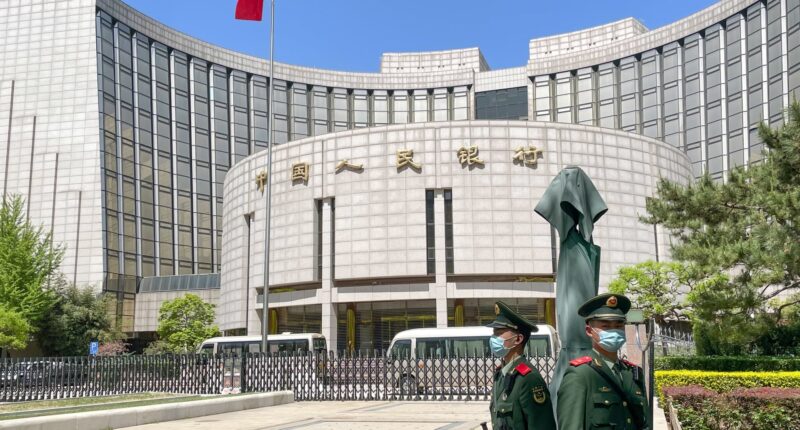Share this @internewscast.com
The People’s Bank of China (PBOC) building in Beijing, China, on Tuesday, April 18, 2023.
Bloomberg | Getty Images
China kept its benchmark lending rates steady on Monday as the country continues to grapple with weak consumer sentiment and softening growth.
The People’s Bank of China held the 1-year loan prime rate at 3.0% and the 5-year LPR at 3.5%.
LPR, normally charged to banks’ best clients, is calculated based on a survey of dozens of designated commercial banks that submit proposed rates to the central bank.
The 1-year LPR influences corporate and most household loans in China, while the 5-year LPR serves as a benchmark for mortgage rates.
The decision comes after the country announced that GDP growth in the second quarter grew at 5.2% year over year, down from 5.4% in the first quarter. This, however, was higher than the 5.1% expected by a Reuters poll of economists.
Retail sales growth in June also slowed to 4.8% from a year earlier, compared with the 6.4% year over year increase in May. That figure also fell short of the 5.4% forecast from Reuters-polled economists.
Following the move, the offshore yuan remained mostly flat, trading at 7.179 against the dollar.
The ‘demand cliff’
Analysts from Nomura said in a July 9 note that while current economic indicators are holding up, economic fundamentals could “worsen visibly” in the second half of the year.
The analysts said that demand could turn much weaker on multiple fronts, adding that asset prices could come under renewed pressure and market interest rates could moderate further.
As such, they think that Beijing “will very likely rush to roll out a new round of supportive measures at some point during [the second half of the year].”
Nomura said that the country was facing a “demand cliff” in the second half of the year, due to factors including an export slowdown resulting from U.S. tariffs and sales declines in the key property sector.
“Amid these negative drivers, the fiscal situation across most cities could deteriorate further. We expect GDP growth to drop to 4.0% y-o-y in H2 from around 5.1% in H1.”








